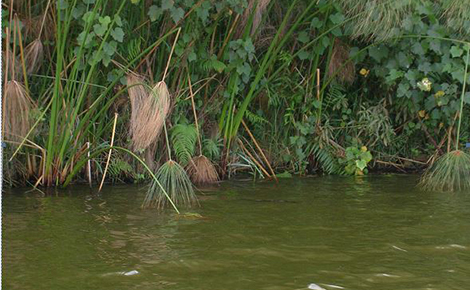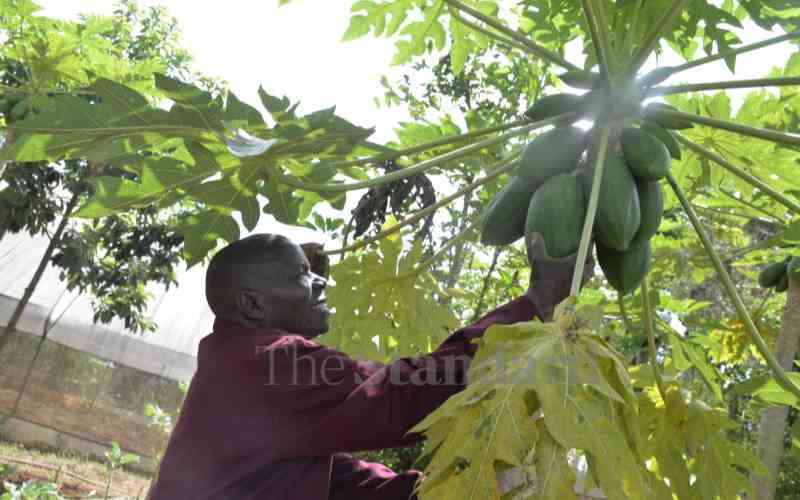 |
|
Yala Swamp |
Yala, Kenya: The World Wetlands day being marked today has been set aside by the Ramsar Convention on Wetlands as a day dedicated to raising public awareness about the importance and values of wetlands. Despite conservation initiatives by government agencies, non-governmental organizations, conservation organizations, and individuals, loss of wetlands in Kenya is still occurring at alarming rates fuelled partly by increasing demand for land. Wetlands are complex ecosystems with multiple values, including ecological, socio-esthetical, intrinsic and economic. Wetlands perform ecological and environmental functions including hydrological (water) cycle and flood control, pollution and eutrophication (excessive nutrient enrichment to water) abatement through sediment trapping as well as carbon sequestration (removing carbon from the atmosphere and depositing it in a reservoir) thereby mitigating global warming. Economically, wetlands are important sources of livelihood to resident communities for example through supporting agriculture, livestock and fisheries.
Despite their recognized environmental and economic functions, tropical wetlands are still among the least understood and appreciated ecosystems and are often viewed as wastelands and are increasingly being modified and degraded, partly due to failure to account for the economic value (i.e. assign a ‘Dollar equivalent’) of benefits derived by local communities dependent on such wetlands. Sustainable management and utilization of wetlands is therefore critical to their long term survival.
The Yala swamp wetland, recently accorded reserve status, is one of the few remaining extensive freshwater wetlands in Kenya and several lakes found within the wetland such as Lake Kanyaboli have been shown to be microcosms of Lake Victoria since they harbour fish species and genetic diversity long extirpated from Lake Victoria. Lake Kanyaboli can be considered a ‘genetic reservoir’ for Lake Victoria genetic diversity and an Evolutionary Significant Unit (ESU) since genetic diversity is the main force driving evolution of new varieties and species.
Despite the recognized ecosystem services the wetland provides, perhaps no wetland in Kenya presents an excellent case of apparent incompatibility between two urgent, but sometimes conflicting, goals of reducing poverty and food insecurity in Africa through agro - aquaculture development while paying due attention to the conservation of natural biodiversity, like the Yala swamp wetland. While to the local communities the wetland is an important source of livelihood through agriculture, fishing and other activities, to development planners, the wetland represents a potential area where agro-industrial exploitation could lead to economic development, and to conservationists the swamp is an important biodiversity ‘hotspot’. Implementing conservation and management practices that reconcile the three apparently conflicting roles of the wetland is key to addressing the needs of the three constituencies and ensuring long term ecological integrity of the wetland and its biodiversity.
Community based conservation has been shown to be an effective management approach to biodiversity conservation in Africa and it is therefore important to recognize the need for engaging local communities in decision making processes pertaining to the management of the wetland resource. Successful community based conservation hinges upon initiating and implementing activities and programmes that strengthen the capacity of local individuals and communities to implement conservation initiatives that produce tangible economic gains. To achieve equitable and sustainable utilization of the Yala swamp wetland the following are some issues that should therefore urgently be addressed: Develop mechanisms for involving members of the local community in decision making on the reserve management, undertake economic valuation of the ecosystem services and compare these with alternative land uses, determine the measures needed to mitigate against future human – resource use conflicts, determine how much carbon the wetland sequesters, its ‘dollar’ equivalent, and what Carbon Compensation Schemes need to be put in place to compensate local communities as custodians of this carbon. Finally, it is important to harmonise national and county government laws and policies with regards to agricultural development and food production on one hand and biodiversity conservation on the other where these seem to be in conflict as well as undertake trans boundary approach to wetland conservation, management and development. The gazettement of the wetland thus perhaps provides the second best opportunity for stakeholders including local communities, investors, politicians, natural resources managers and scientists to constructively engage and come up with an integrated strategic management plan for the entire Yala swamp wetland to safeguard this priceless ecosystem and its biodiversity for posterity and demonstrate that biodiversity conservation can indeed be a means to economic development.
 The Standard Group Plc is a
multi-media organization with investments in media platforms spanning newspaper
print operations, television, radio broadcasting, digital and online services. The
Standard Group is recognized as a leading multi-media house in Kenya with a key
influence in matters of national and international interest.
The Standard Group Plc is a
multi-media organization with investments in media platforms spanning newspaper
print operations, television, radio broadcasting, digital and online services. The
Standard Group is recognized as a leading multi-media house in Kenya with a key
influence in matters of national and international interest.
 The Standard Group Plc is a
multi-media organization with investments in media platforms spanning newspaper
print operations, television, radio broadcasting, digital and online services. The
Standard Group is recognized as a leading multi-media house in Kenya with a key
influence in matters of national and international interest.
The Standard Group Plc is a
multi-media organization with investments in media platforms spanning newspaper
print operations, television, radio broadcasting, digital and online services. The
Standard Group is recognized as a leading multi-media house in Kenya with a key
influence in matters of national and international interest.









